It’s All in the Heart
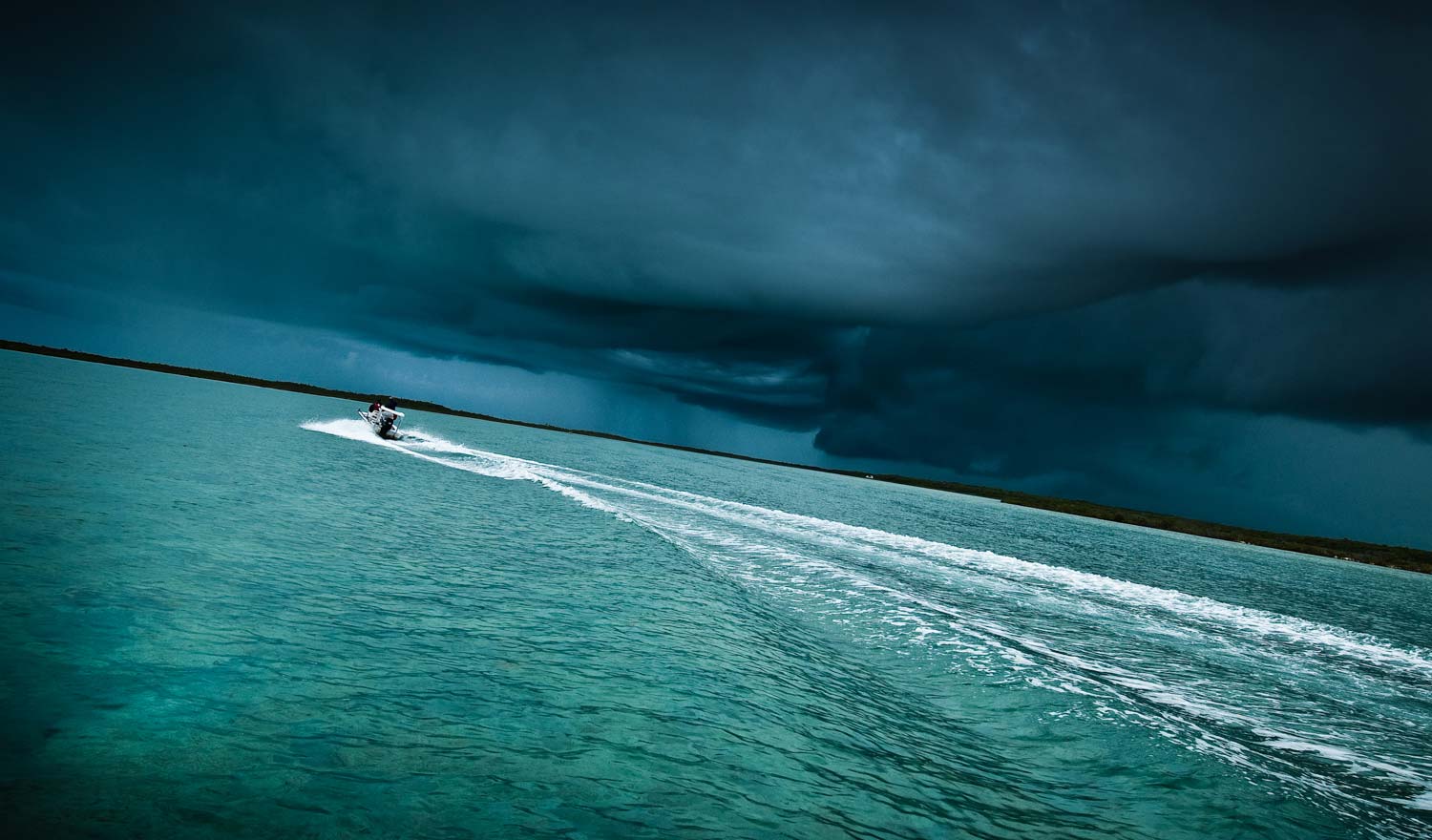
By Louis Cahill
Bill didn’t know anything about fly fishing.
That’s not my judgment; he told me so. In fact, it was the first thing he told me. Standing on the bow of the skiff, staring into a Bahamian flat, looking for a fish he’d only heard of, he was as out of his element as a cat on roller skates. A tire salesman from Wisconsin, he’d walked into the local fly shop and told the guy behind the counter,
“I want to catch a tarpon on a fly. What do I need?”
The shop guy told him you don’t just buy a fly rod and catch a tarpon. He knew about the Gink and Gasoline Bonefish School and said,
“Go on this guy’s trip. He’ll teach you what you need to know to catch a tarpon.”
When Bill told me that story, I thought, hell yes! I’ll fish with this guy any day. I don’t care if he doesn’t know which end of the rod to hold.
The first day Bill and I fished together was not a great day for a beginner. We had some sun but the wind was howling. I’m sure Bill had some thoughts about how much he’d spent on that new eight-weight rod, that must have felt worthless in that wind. When I stepped up and punched my clearing cast into the wind, he moaned,
“Jesus! Right into the wind,” and rested his face in his hands.
I’ve heard folks, mostly folks who know less than Bill about fly fishing say, “It’s all in the wrist.” Of course, it isn’t. It’s no more in the wrist than it is in the rod, the line or the fly. It’s not in a book or a video. It isn’t even in your head. Fly fishing is in your heart, and I didn’t have to spend much time with Bill to see that his was full.
Bill didn’t want to catch a tarpon because it would make him cool, or even because it was a challenge. He didn’t want to do it so he could post the photo on Facebook or brag to his buddies. His buddies wouldn’t even know what a tarpon was. Bill wanted to catch his tarpon for one simple reason. His doctor had told him he was going to die. Soon, and for what ever reason, catching a tarpon on the fly was the one thing he wanted to do first.
When Bill told me that,
Read More »Flynn’s Stonefly Nymph

I HAVE SAID ON MANY OCCASIONS THAT, I DON’T CARE TO LIVE IN A WORLD WHERE TROUT DON’T EAT STONEFLIES.
My good friend Dan Flynn shares my obsession with the noblest of insects. Dan is a great tyer with an impressive repertoire of classic patterns. I have always admired his meticulous stonefly nymphs. I’ve also spent many days watching him crush trout on them.
The Scott Wave Fly Rod Has A Secret
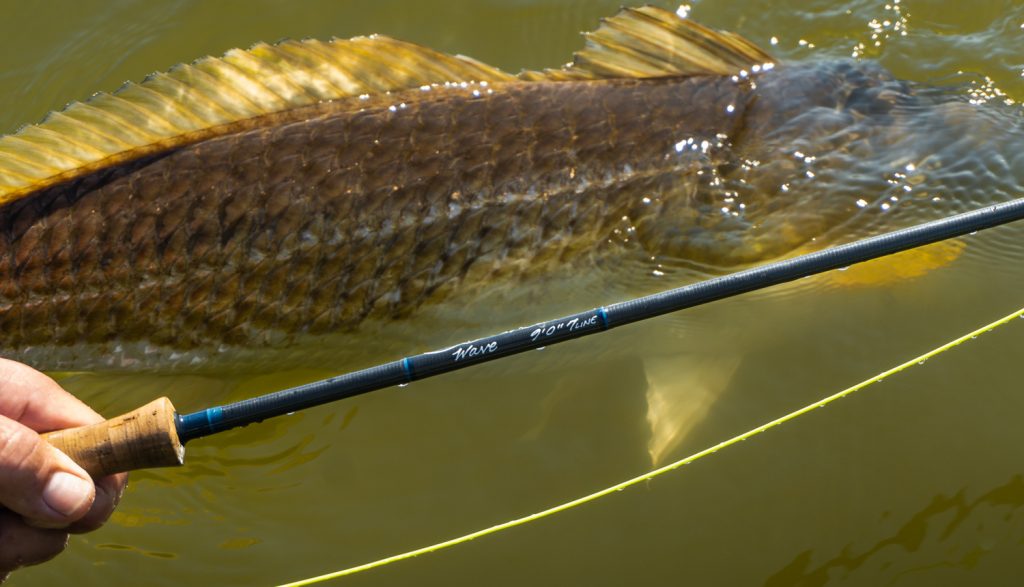
Scott’s new mid-price offering, The Wave, is not what I expected. Jim Bartschi sent me a seven weight wave a couple of months ago, just before I headed to Belize for five days. He didn’t tell me anything about it, which is typical for Jim. I assume he wants me to come to my own conclusions about a rod without his opinion, which I appreciate. I took the rod out and cast it in the from yard for a bit. “It’s a little soon to be replacing the Sector,” I thought, “but OK.” I took the rod to Belize and was into fish on my second cast. The weather was awful and pretty windy for a seven weight but the Wave really delivered. It cut through the wind, delivered flies with remarkable accuracy and and finesse. I was impressed. Not ready to give up my Sector but I immediately loved this little rod. When I got home, I called Jim up to talk about the trip and was shocked to learn that the Wave is not replacing the Sector. It’s replacing the Tidal! I should have guessed from the name but the Wave, in no way, feels like a mid-priced fly rod. The weight, the tracking, the recovery rate all feel like a premium rod. Since the Radian, Scott fly rods have had a unique feel that sets them apart. Not that I didn’t lone my S4s but the contemporary Scott rods are truly next level. I did not get that feel from the Tidal but the Wave has it in spades. Once I got the rod home, frankly, I couldn’t stop fishing it. Since I’m stuck with fresh water here, I started using it for streamers and bass fishing. I was thrilled with hoe it preformed. The Wave is … Continue reading
Read More »A Guideline To Accuracy in Fly Tying
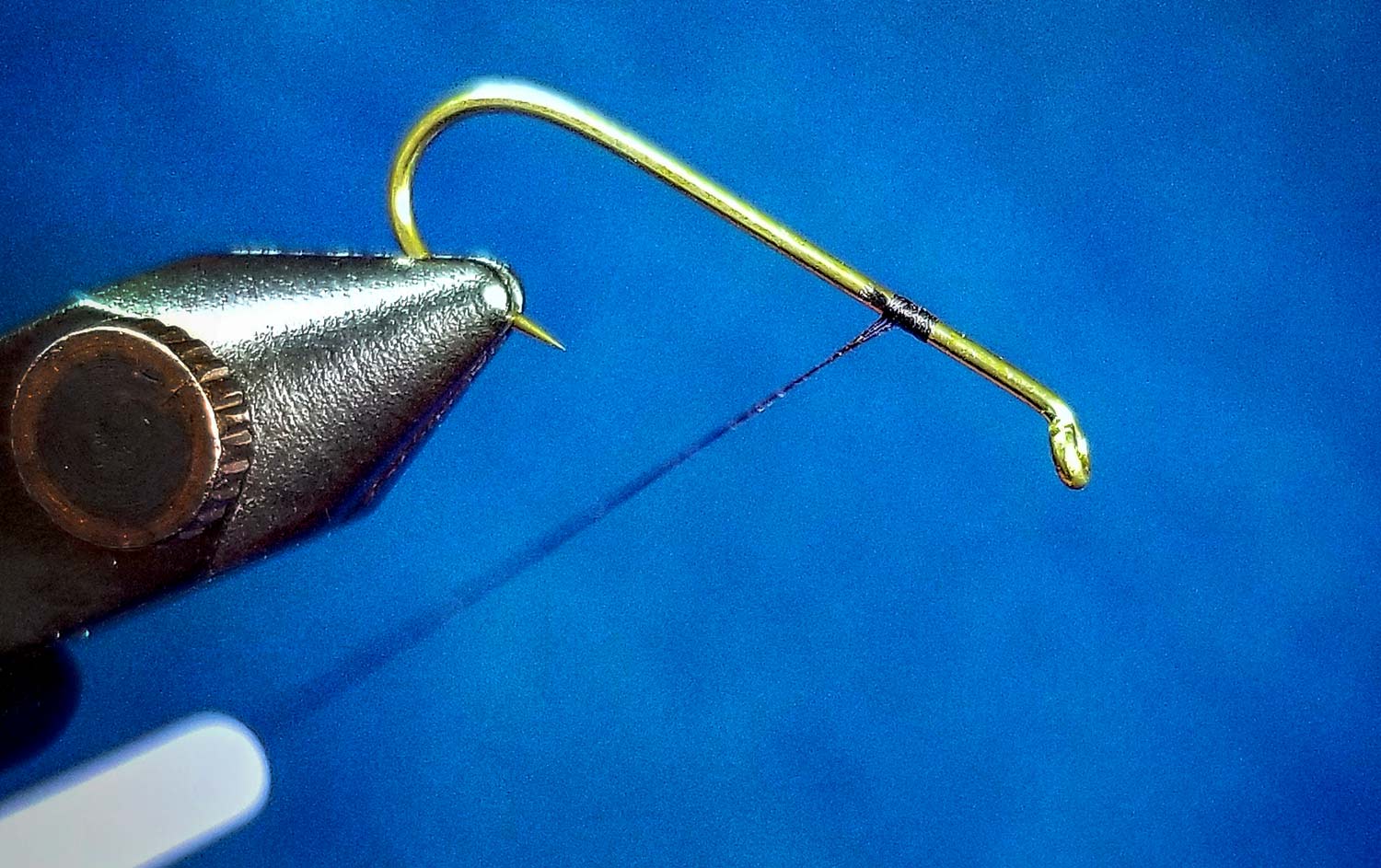
By Bob Reece
Good fly tying is all about accuracy.
One aspect of fly tying that often creates frustration is tying in materials in the desired location. As hook size decreases, this task can becomes even more difficult. While time spent tying helps to conquer this issue, there is a technique that expedites the process.
From a young age, I’ve had larger than average hands. While this is great in many aspects of life, it’s not always beneficial in fly tying. As a young tier I often struggled to secure many materials to the hook in the location where I knew they should be. My hands either blocked my field of vision or were simply too large to work with the smaller sizes of the hook range.
One day I wandered into a fly shop on a cold snowy spring day. There was a man at a tall table tying streamers. As I watched him tie, he did something that I had never seen before. He folded several of the materials over or under the thread, to some degree. Then he simply slid the materials down the thread, using it as a guideline to the exact location of the tie in point.
While I’m sure that this man did not invent this technique and that it’s undoubtedly been used by tiers the world over, it had a huge impact on my development as a tier. By using the thread as a guideline to the hook shank, the tier eliminates the possibility of lateral movement by the materials. This system ensures that the material lands exactly at the base of thread strand. The location of the bobbin in the three hundred and sixty degrees of one wrap determines which side, top or bottom of the shank the material ends up on.
Read More »Fly Tying, Less Is More

CLICHÉ SAYINGS ARE NOT ALWAYS HELPFUL OR APPLICABLE. THERE ARE EXCEPTIONS HOWEVER, WHEN IT COMES TO TYING FLIES. “LESS IS MORE”.
Over the past ten years I’ve been blessed to spend time teaching new fly tiers of all ages. Regardless of age or gender beginning tiers often work on the “more” end of the spectrum. Excessive distance between the tip of the bobbin and the hook shank is one of these hurdles. When constructing flies, more distance between these two object makes for more difficulty. Keeping the tip of the bobbin in contact with the hook reduces the likelihood of cutting it on a hook point or the edge of the vise jaws. Additionally, this technique makes it easier to maintain consistent pressure when tying in materials. Lastly, it reduces the total tying time for each fly.
As a tier it is also extremely important to remember that the vast majority of aquatic insects are petite creatures. Far too often this fact is over looked during the construction of flies. Excessive use of materials results in bulky pattern profiles that do not accurately match their intended imitation. Simultaneously, unneeded thread wraps also add bulk to flies. With most patterns, minimizing the amount of material and thread wraps results in a more accurate end product.
Take a moment to evaluate what you are doing as a tier. The next time you
Read More »Switch Vs Spey Rods
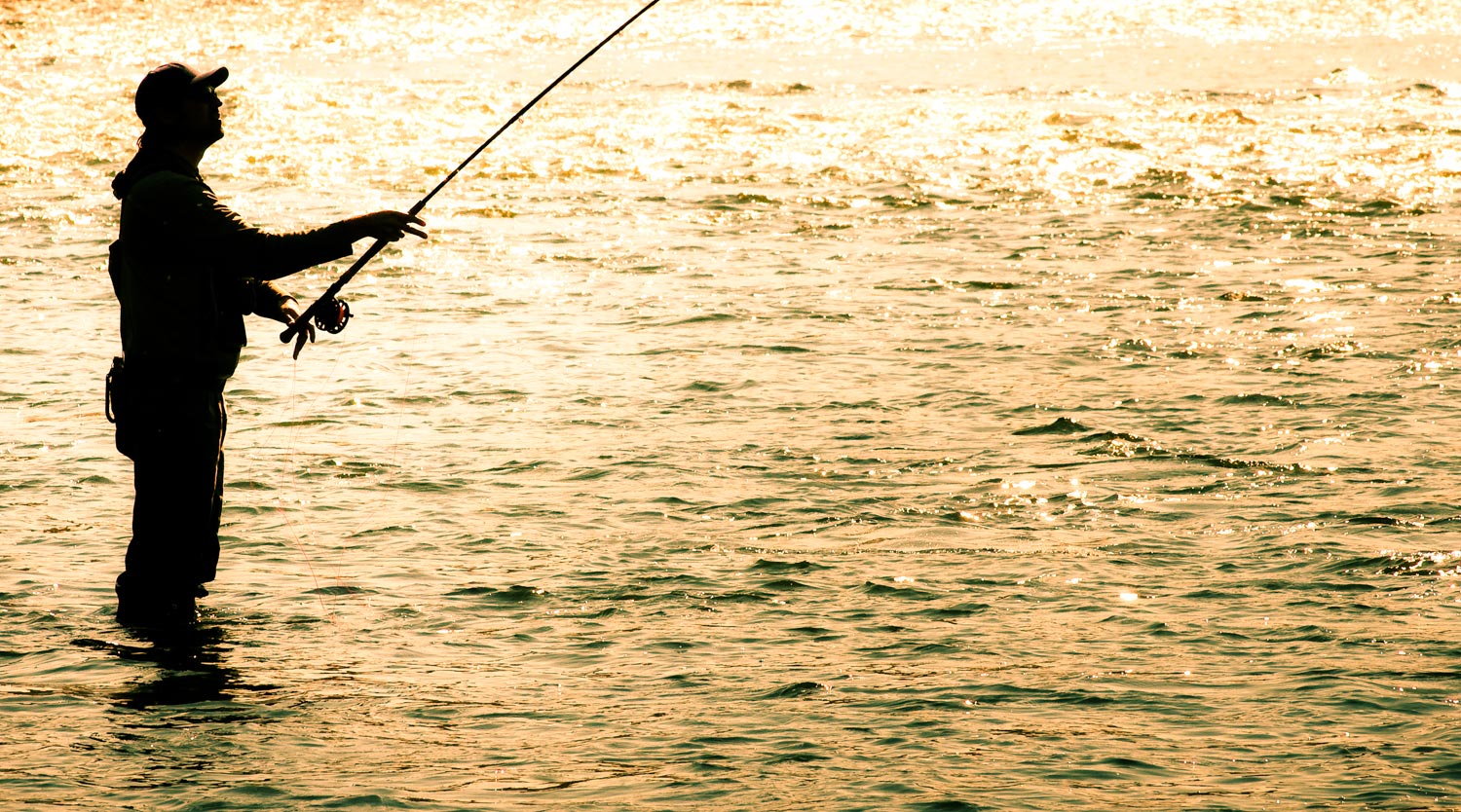
Are you curious about what the terms switch and spey mean in fly-fishing? Here are some answers.
I recently shared an older article about choosing a line for your switch rod as a Sunday Classic. The comments section lit up pretty quickly about the terms switch and spey. I thought it might be a good time to try and give a little perspective on the terms, what they mean and where they come from. Whether you are a single-hand or two-hand caster, you’ll find this interesting.
What is a spey rod?
Spey rods were developed in Scotland for fishing Atlantic salmon. They are long rods, 12 feet six inches or longer, with upper and lower grips, intended for casting with two hands. These rods were born of necessity. Salmon anglers needed to make long casts with little or no room for backcasting. They also needed to manage long lines as they swung their flies.
The answer was a long limber rod, which could be loaded and cast without a backcast. Of course, to do this, a style of casting had to be developed to accommodate both the rods and the rivers. This style of casting became known as spey casting, for the Spey River where it was born. These long rods were heavy and awkward to manage, so it was necessary for anglers to use two hands to cast them. It is important to note that spey casting and spey rods are two ideas, separate but associated. You can make any spey casts with a single-hand rod. You can also make overhead casts with a spey rod, although there are some good reasons not to make a habit of it.
To further complicate the matter, anglers in the US and Canada started using a radically different line configuration on their spey rods. Called skagit heads, for the river where they were developed, these aggressive shooting heads and their heavy, interchangeable sinking tips revolutionized steelhead fishing. Along with those lines came a new style of casting created to lift those heavy systems. Although some folks call these skagit casts, they are more often lumped into the family of spey casts. It’s also worth noting that you can, and some anglers do, fish these shooting heads on single-hand rods, even if it means significant physical pain at the end of the day.
What is a switch rod?
Switch rods were born around the 1970s and took a while to catch on. A switch rod is quite simply a two-hand rod, which is shorter than 12 feet six inches. The idea was, and is, that an angler could cast these rods with one hand or two, depending on the situation and their objectives.
DIY Camper Van Tour

Meet the Gink and Gasoline Intruder. I’ve always wanted a camper van to make extended fishing trips easier and more affordable. The problem is, the rest of the world wants one too and prices have gotten out of hand. So I set out to design and build a DIY camper van that gives me everything I need to live comfortably on the road, without the six-figure price tag. I bought my 2008 Sprinter Van several years ago, fortunately before used vehicle prices went through the roof. It has a few years on it but only about 60K miles when I bought it. I built all the improvements myself for around $2500. I’m in a super comfortable camper for right around $20K total. It took some luck and some work and a lot of head scratching but none of it was really difficult. If you can use a circular saw and a drill, you can do it too! Check out this video for a complete tour!
Read More »Big Fish On The Margins
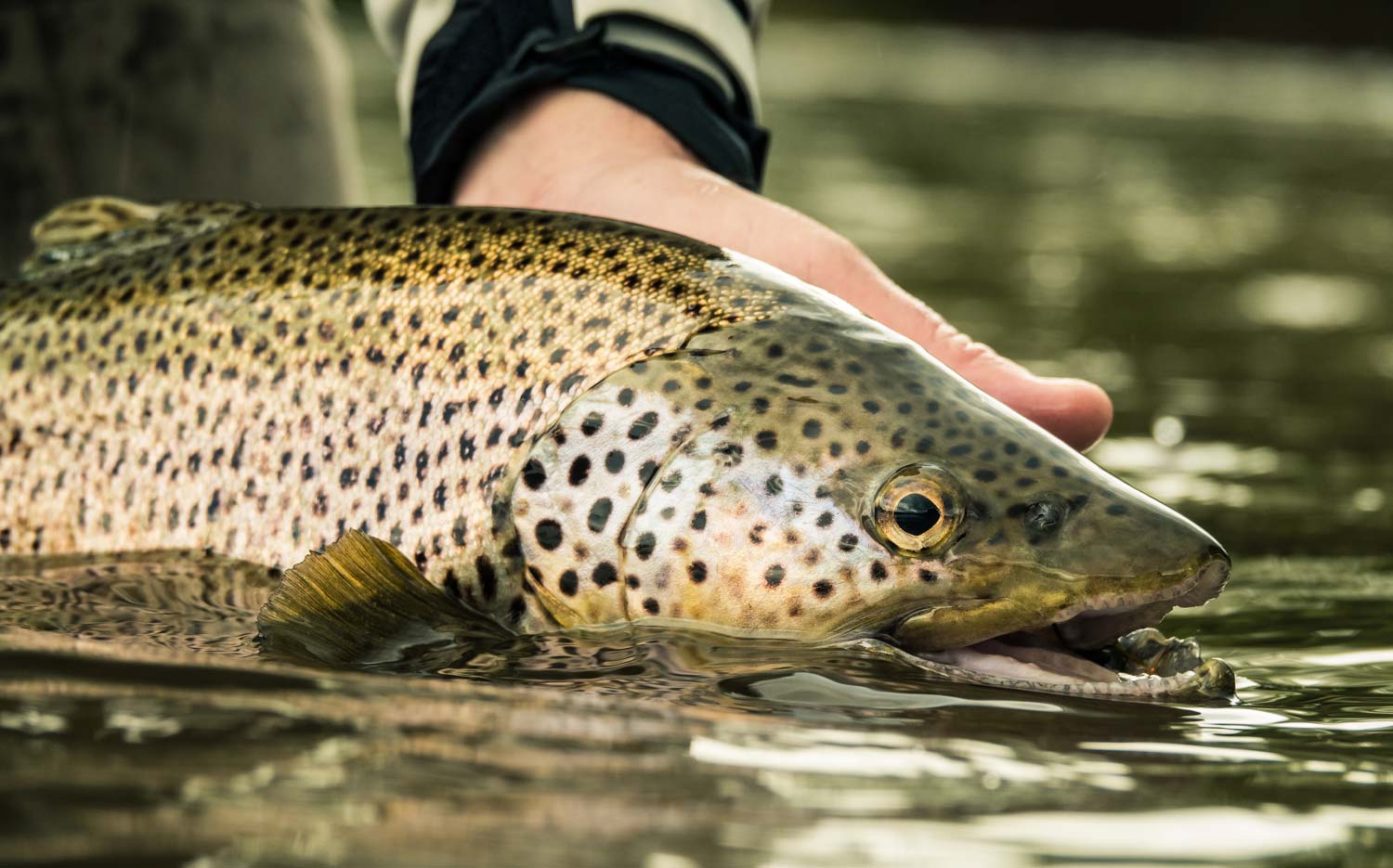
By Louis Cahill
High water events can make it easier to target big fish in unusual places.
Most anglers know from experience that high water often means big fish. There are several reasons for this, not least of which is the confidence mature fish find in the cover offered by higher than usual water. Especially when the water is a little stained, you have the opportunity to target fish who would otherwise only feed at night. In addition to having larger, predatory fish in a feeding mood, high water can also make them easier to find. Especially in smaller streams where high water conditions may make their usual holding water less comfortable.
On a recent trip to Patagonia, my buddy Johnny Spillane and I fished some unusually high water. Spring, October/November down there, is usually not a wet time of the year, but unexpected heavy rains had rivers swollen and water moving at an unusual tempo. Most of the Patagonian rivers still run crystal clear, even at their highest, but a few showed some color. In spite of the conditions, we had amazing fishing and, though we fished only small streams and rivers, we caught a lot of big fish. In fact, the average size of the fish we caught was larger than I expected.
The conditions, and the tactics we employed to fish them, successfully targeted the largest fish in the river.
The first choice made was an obvious one. We passed over the spots where fish would normally hold and fished the margins. The spots that wouldn’t normally offer fish much cover but which, in higher flows, offered soft water where fish could take refuge from the raging current. Many of the spots where we caught quality fish were micro seams created by small structure or nooks where a piece of bank had caved away.
Shallow inside bends were another big producer as are the narrow cushions along steep banks. Tempting looking drop-offs and deep pools under performed and although traditional holding water, like the seams from midstream boulders produced fish, some of the largest fish we caught came from the smaller holds. Many spots produced several nice fish.
The second choice that paid off for us was
Read More »Fish Floating Nymphs for Selective Trout
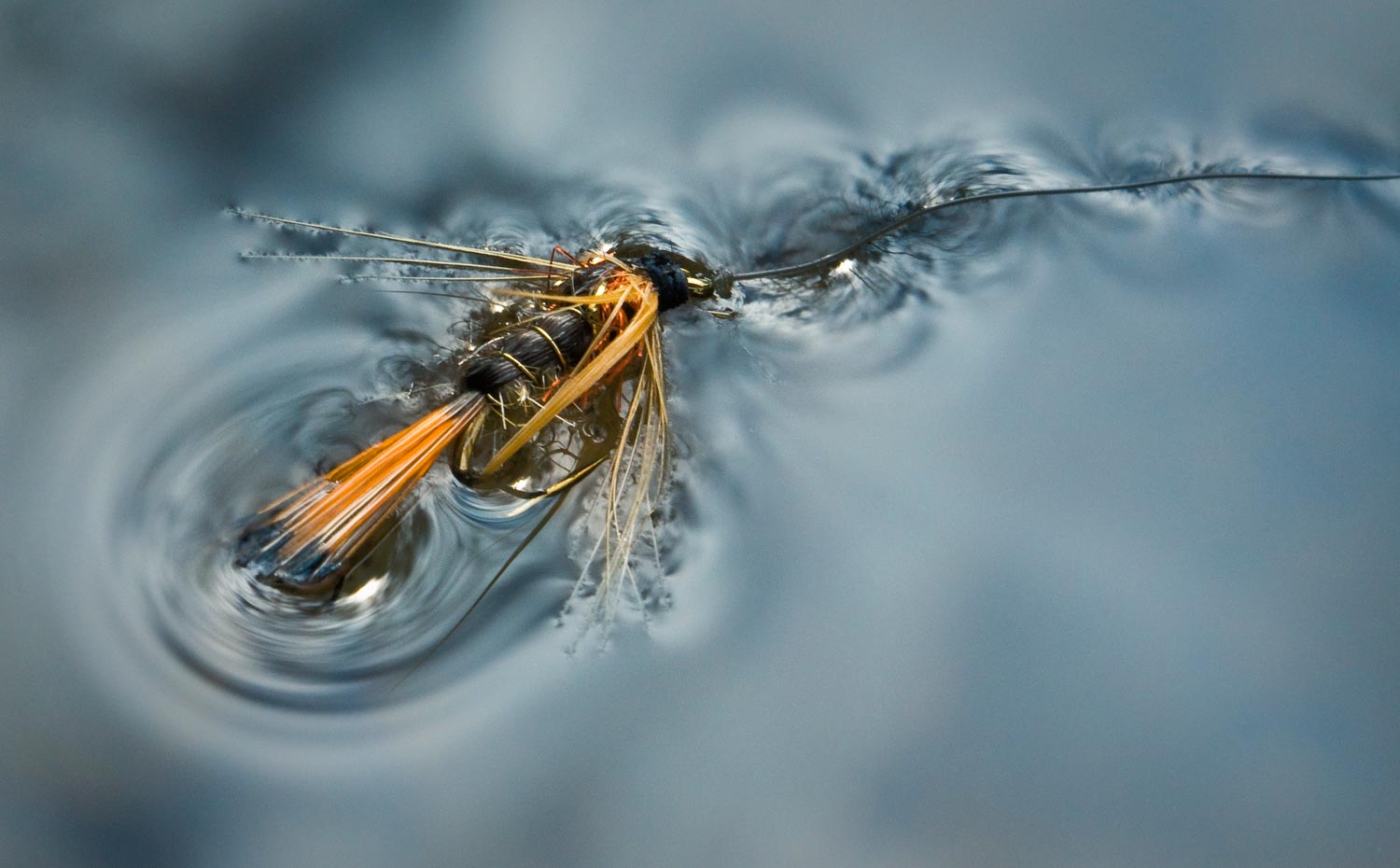
TELL ME IF THIS SOUNDS FAMILIAR.
You’re kneeling at the edge of a slow glassy pool watching several big trout inspect what floats above them. You change flies, again, and make yet another perfect presentation, only to watch the fish move three feet out of the way as your fly passes by.
It’s a common scene on heavily pressured, catch-and-release trout streams. Big educated fish who have seen a lot of flies don’t come to hand easily. Kent and I were in exactly this scenario just the other day and were able to turn it around using a simple but often overlooked technique. A floating nymph.
Fish see dry flies in a very different way than we see them. Before the fish inspects your thread color or how many turns of hackle you’ve used it sees the impression of the fly on the water. These slight dimples in the surface film are incredibly powerful triggers for feeding fish. The curved surface of the water, which supports the fly, focuses the light creating a bright spot that get the fish’s attention like a flashing light. This is why fish commonly eat Thingamabobbers.
Fish who live under constant pressure from anglers become very savvy at reading these impressions on the surface film. They eat only those items that make subtle, life-like impressions. The kind of impressions made by emerging insects struggling in the film. Nothing I know of is a better imitation than a floating nymph.
Start with the right nymph. It must be unweighted. A nymph tied with
Read More »Fly Casting: Power and Control

By Louis Cahill
I’m just back from four days fishing for golden dorado at Parana on the Fly Lodge in Argentina.
Dorado fishing is the most demanding fly fishing I know and, days later, I still have the sore muscles to prove it. We target these apex predators with big flies and heavy rods. Success depends on making accurate casts and often at long range. You might make a hundred of these casts before you strike gold. If there are any shortcomings in your casting, dorado will find them.
It’s no small thing to make several hundred casts a day, turning over an eight-inch streamer accurately. Especially when many of those casts are over sixty feet. You need the right balance of power and control to do it consistently. Especially as fatigue sets in. I learned a technique years ago when fishing the salt that makes it all come together. The key is knowing when to focus on the power and when to focus on the control.
One of the most fundamental principals in fly casting is, you can’t make a good forward cast without a good back cast. This is often where anglers start to struggle as they become fatigued. Their back cast becomes anemic and there is no saving the forward cast. This is especially true when wind or large flies complicate the process. The key is to start with a powerful back cast.
By focusing on power in your back cast you insure that you are able to fully load the rod for your forward cast. A loaded rod is where real casting power comes from, so by generating enough power and inertia in your back cast you are setting yourself up for success on you forward cast. Once the line
Read More »